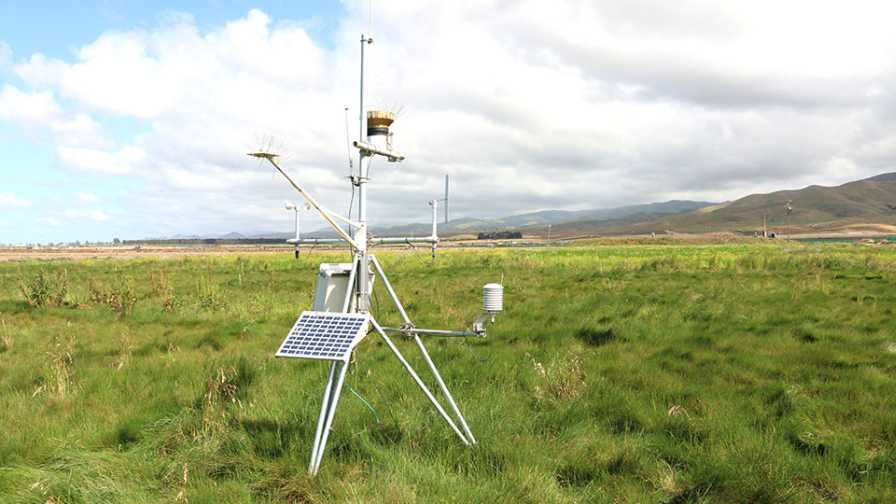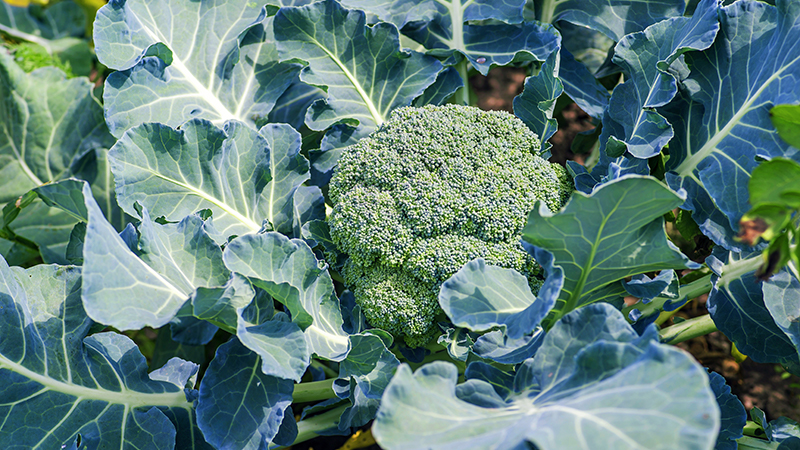Does Evapotranspiration Work for Vegetable Crops?

Weather stations that monitor evapotranspiration over a well-watered grass provide a daily reference ET value that growers can use for irrigation scheduling.
Photo by Michael Cahn
When I first started working in the Salinas Valley almost 20 years ago, I asked growers if they used evapotranspiration (ET) data to guide their irrigation decisions. The data can help growers adjust irrigation based on plant water needs — saving them labor and irrigation costs.
Most growers answered that ET does not work for cool-season vegetables.
Many thought crop coefficients were not accurate for the wide range of vegetables produced in our region. Some lacked confidence in ET scheduling because the weather stations that provide data points for ET calculations were not close to their fields.
Several growers admitted using ET data was complicated and time consuming. They preferred to rely on their irrigation foremen to make decisions on when and how long to irrigate.
And many growers and irrigators doubted that instruments on a weather station can accurately estimate crop water use. After all, in contrast to soil moisture, which can be verified with a shovel, vapor loss from a crop is invisible.
Different Crops Have Different ET
The crop itself affects ET rates. A crop with many leaves to absorb sunlight and ample soil moisture has a higher ET than when it has few leaves and is growing in dry soil. Some species of plants can use less water than others due to the characteristics of the leaves, such as having a thick cuticle or trichomes that reflect light.
ET weather station sites matter, too. To eliminate variables stemming from crops, ET weather stations are usually sited on a well-watered grass of the same species. The canopy is also consistent throughout the year, so these ET measurements reflect only differences in weather among sites.
The key to using reference ET for irrigation scheduling of vegetables is to have accurate crop coefficients to transform the ET values from well-watered grass to an estimate of ET for a different crop. Research we have conducted in the Salinas Valley demonstrated that the fraction of the ground covered by the leaves of a crop (fractional cover) can be used to estimate the crop coefficient for many types of vegetables and can account for water needs at different development stages. In addition, crop coefficients can be used to estimate soil evaporation that occurs after irrigating.
We conducted field trials in iceberg and romaine lettuce, broccoli, cauliflower, red and green cabbage, and celery. When we irrigated using ET data and coefficient models based on fractional canopy cover and estimates of soil evaporation, yield and quality were maximized.
What Is ET?
So what exactly is evapotranspiration (ET) and how is it measured?
I like to think of ET as the reverse of rainfall. Instead of measuring the depth of precipitation a crop receives in units of inches or millimeters, ET estimates the depth of water lost from a crop as vapor.
ET aggregates water loss by evaporation from soil and transpiration from the plant leaves. Both processes require energy to change water from a liquid to a vapor. Energy for vaporizing water comes from absorbed sunlight, or from heat
transferred from soil and air.
The station uses a mathematical equation to measure the estimated ET for: solar radiation, relative humidity, air temperature, and wind speed.
Using Evapotranspiration to Schedule Irrigation
ET is not the amount of water that should be applied to fully irrigate a crop. Rather, it is an estimate of crop water use.
Other factors also impact the amount of water to apply, including the irrigation system’s application uniformity, irrigation water’s salinity, as well as the soil’s water-holding capacity, rooting depth, and development stage.
You’ll need extra water, for example, to compensate for irrigation systems with low application uniformities or for leaching salts that can build up in the soil. Water needs increase during germination to assure uniform emergence, especially when irrigating with overhead sprinklers under windy conditions.

Overhead images of lettuce canopy taken with a digital multispectral camera are used to develop crop coefficient models that can be used in irrigation scheduling software such as CropManage.
Photo by Michael Cahn
New Tools Make It Easy
Considering all the factors involved in using ET for irrigation scheduling, it is not surprising that growers often do not use it. Especially since most medium to large vegetable-growing operations are managing hundreds of plantings each season.
To help growers use ET data to determine their crops’ irrigation needs, University of California Cooperative Extension launched an online software tool in 2011.
CropManage helps growers quickly determine their vegetable crops’ irrigation requirements. The software not only estimates the appropriate crop coefficient based on the species and development stage but factors in soil type and application uniformity. It can create an irrigation time based on the application rate of the irrigation system as well as recommend how frequently to irrigate.
Though CropManage currently serves growers in California, universities in other states such as Florida and Washington developed similar types of tools.
Satellite-based data may provide better spatial resolution of reference ET and over larger regions than is currently available. OpenET is a collaborative project among several institutions, universities, and government agencies, including National Aeronautics and Space Administration, to develop an online platform that provides reference ET data at high-spatial resolution for the entire Western U.S.
As ET values become more accurate and accessible, and software such as CropManage simplifies using ET data for irrigation scheduling, even inexperienced managers will be able to quickly and accurately use weather information to determine how long to irrigate their crops.
Knowing ET Values Helps Growers
Evapotranspiration values are collected from weather stations operating in most agricultural regions of California and maintained by the Department of Water Resources. You can find the values online, published daily. With that, you can estimate the amount of water that a well-watered grass would use. Crop coefficients are used to adjust these reference ET values so they can be used to estimate the water use of other crop species.










